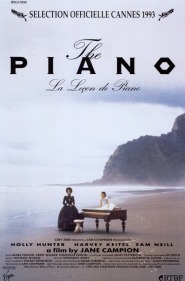The email sent will contain a link to this article, the article title, and an article excerpt (if available). For security reasons, your IP address will also be included in the sent email.
The evening waterworks continue. Here's Andrew on a particularly gloomy shower.
 The Piano is a moody movie. Moody as in unpredictable and volatile, and moody as in suggesting melancholy and mystery. Even before the story really gets underway the film's atmosphere is one of unease. And it's because it's not just the story that's moody but visually, too. As Stuart Dryburgh's camera observes the rough, muddy ranches of New Zealand the harsh exteremities of the terrain seem to be not just incidental but direct representations of the similarly implacable characters.
The Piano is a moody movie. Moody as in unpredictable and volatile, and moody as in suggesting melancholy and mystery. Even before the story really gets underway the film's atmosphere is one of unease. And it's because it's not just the story that's moody but visually, too. As Stuart Dryburgh's camera observes the rough, muddy ranches of New Zealand the harsh exteremities of the terrain seem to be not just incidental but direct representations of the similarly implacable characters.
This is but one of the numerous ways in which the Gothic influence on The Piano shines through, where landscape informs elements of plot and characters. The Piano checks off a number of the prerequisites for Gothic drama: impulsive, sometimes tyrannical men, women in distress, heightened emotion, a mysterious atmosphere, a somewhat isolated locale, stormy weather and muddy terrains.
Of the influence of the Gothic in the film, Jane confesses...
 Return to Article
Return to Article